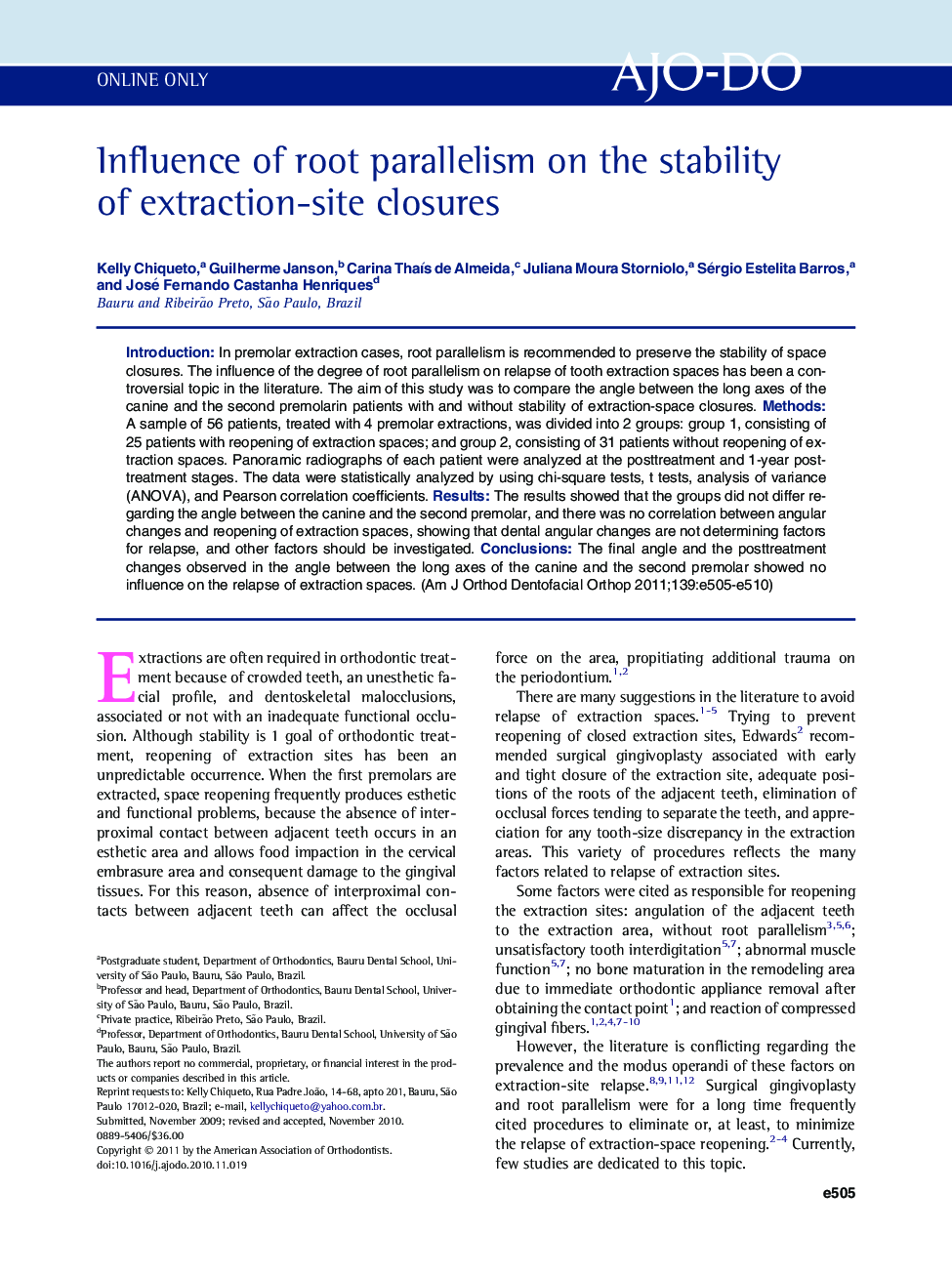| Article ID | Journal | Published Year | Pages | File Type |
|---|---|---|---|---|
| 3117236 | American Journal of Orthodontics and Dentofacial Orthopedics | 2011 | 6 Pages |
IntroductionIn premolar extraction cases, root parallelism is recommended to preserve the stability of space closures. The influence of the degree of root parallelism on relapse of tooth extraction spaces has been a controversial topic in the literature. The aim of this study was to compare the angle between the long axes of the canine and the second premolarin patients with and without stability of extraction-space closures.MethodsA sample of 56 patients, treated with 4 premolar extractions, was divided into 2 groups: group 1, consisting of 25 patients with reopening of extraction spaces; and group 2, consisting of 31 patients without reopening of extraction spaces. Panoramic radiographs of each patient were analyzed at the posttreatment and 1-year posttreatment stages. The data were statistically analyzed by using chi-square tests, t tests, analysis of variance (ANOVA), and Pearson correlation coefficients.ResultsThe results showed that the groups did not differ regarding the angle between the canine and the second premolar, and there was no correlation between angular changes and reopening of extraction spaces, showing that dental angular changes are not determining factors for relapse, and other factors should be investigated.ConclusionsThe final angle and the posttreatment changes observed in the angle between the long axes of the canine and the second premolar showed no influence on the relapse of extraction spaces.
